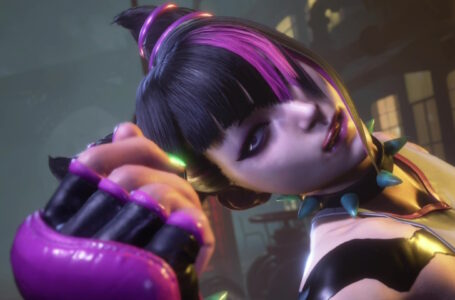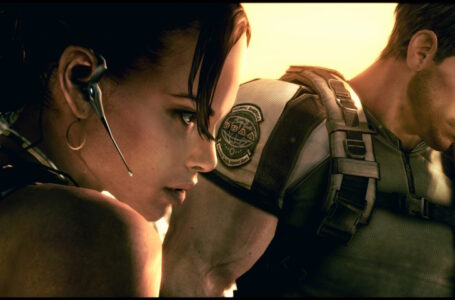Let’s go Tenjiku in SonSon
So, after taking a look at 1943: The Battle of Midway, which is the freebie for downloading the first Capcom Arcade Stadium, let’s today turn our attention to 1984’s SonSon, the freebie that comes with Capcom Arcade 2nd Stadium.
In many respects, SonSon is a perfect representation of Capcom Arcade 2nd Stadium: it’s a much lesser-known game that is nonetheless solid and enjoyable — and as valid a part of Capcom history as the company’s more established titles, particularly since it was Capcom’s first arcade title to come to the west. It’s also another work from the mind of Yoshiki Okamoto who, as we explored last time, not only designed a bunch of great games from Capcom’s early days, would also go on to create the Final Fight, Street Fighter II and Red Dead series.
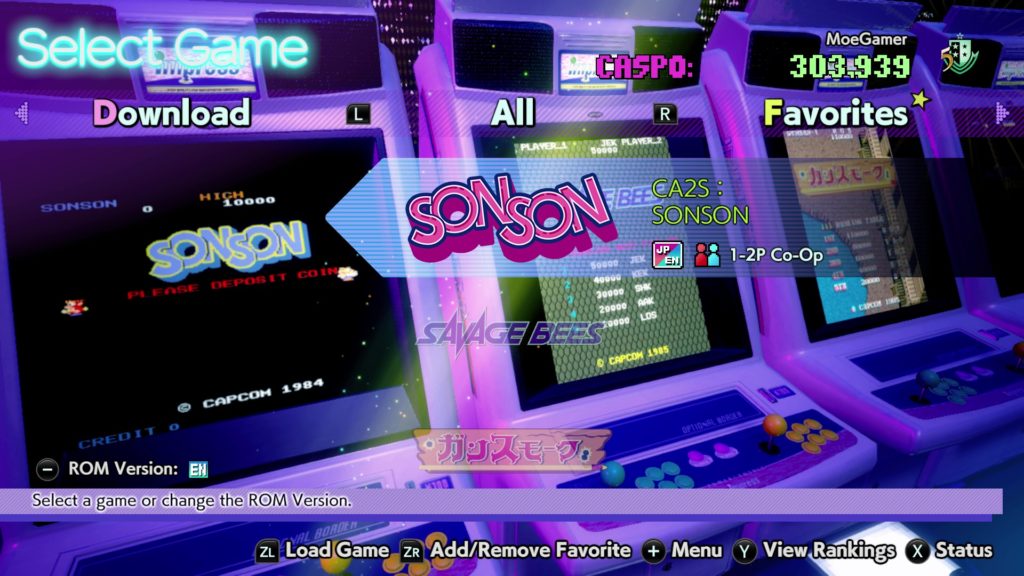
SonSon is a game that is loosely based on the classic Chinese novel Journey to the West. Taking on the role of SonSon (based on Sun Wukong from the story) and optionally bringing along a second player as TonTon (Zhu Wuneng, or “Pigsy” in many westernised versions) it’s your job to survive a journey to Tenjiku in order to rescue SonSon and TonTon’s three friends, who have been kidnapped.
To the unfamiliar, SonSon might look like a platform game. It continually scrolls from right to left (surely missing a trick; going the other way would have felt more like “journeying to the west”) and the screen is split into six platforms, which occasionally have gaps in them. However, there’s no real precise “jumping” involved; instead, the platforms act as “lanes”, an the game is more of a shoot ’em up.
SonSon and TonTon can move left and right on the platforms while the screen continues to scroll, and can also jump up or down to the next platform at any time — or simply fall through a gap in the latter case. Notably, neither of them are able to move while changing platforms, so it’s important to time this carefully to ensure you don’t run into enemies.
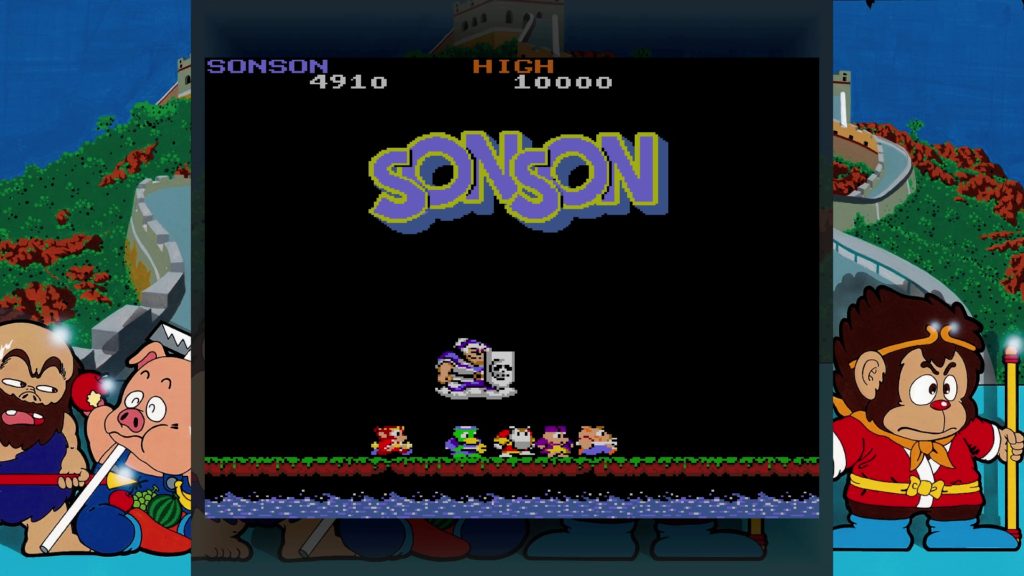
As you progress, various enemies enter from the sides of the screen and behave in various distinct ways; some will change platforms just like SonSon and TonTon, while others will stay in strict formation, follow set movement patterns or home in on our heroes. Each enemy type is visually distinct from one another, so after just a play or two you’ll be able to predict how each of your foes is going to behave, and how you might want to deal with them.
Scoring in SonSon is surprisingly sophisticated for a game of the era, and it won’t take long for you to become confident enough with the game to want to engage with the scoring mechanics beyond a surface level.
The most simple means of racking up points in SonSon is to ensure that you clear out complete waves of enemies at a time, since like in many of Capcom’s other shoot ’em ups from the time, you get a significant score bonus for this. Alongside this, however, there are a lot of collectible points items that show up along your journey; many of these are worth relatively trivial amounts of points, but they are still relevant: when “large” score items appear, their value is determined by the average value of the smaller items you’ve been picking up until that point.
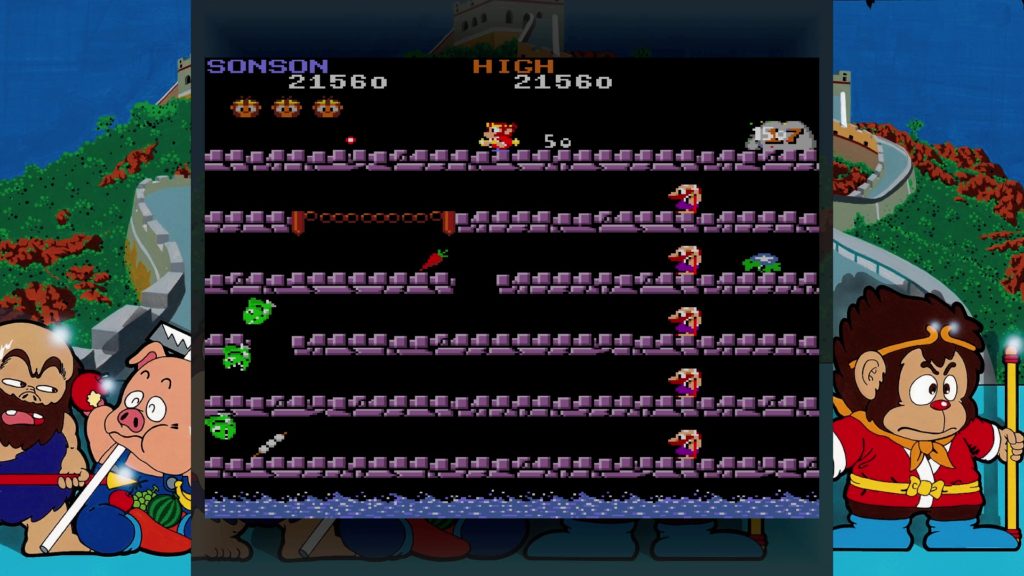
On top of that, collecting large score items eventually causes “POW” items to appear, which destroy all on-screen enemies and turn them into large score items — obviously requiring proper timing to take full advantage of. And as if that wasn’t enough, there are hidden bamboo shoots around the levels that reward you with points for both discovering and collecting them.
Every few stages, your journey will be interrupted by a large fortress, where you’ll need to destroy shields on all six platforms and defeat the Luigi-looking guards hurling bombs at you while simultaneously fending off continually incoming enemy formations. The quicker you destroy the fortress, the more likely you are to spawn a special score item — which, in the true tradition of early Capcom games, takes the form of the star-shaped yashichi icon. Score one of those and you know you’re doing well.
SonSon is a great example of Capcom’s strengths from the early days: it’s a simple, accessible game that has plenty of hidden depth to it, and which you can quickly go from being completely inexperienced to racking up some impressive scores. It’s not so easy that you’ll be one-credit clearing it immediately, mind — at least partly due to Capcom’s tendency to make their games have 20 or more stages in the early days — but it is a game where after just a few attempts you’ll feel yourself getting noticeably better at handling the various situations it presents you with.
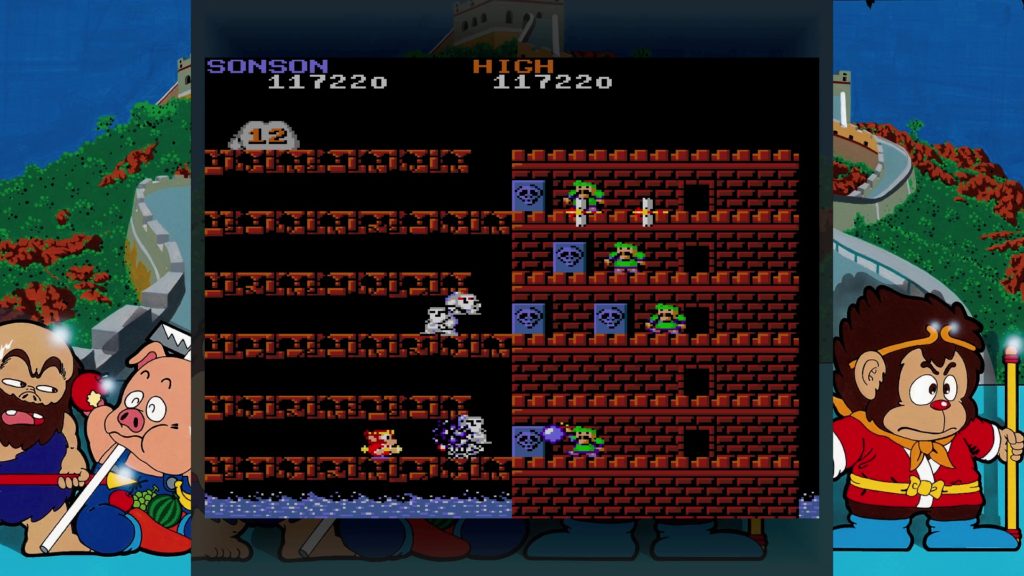
SonSon has plenty of personality, it has responsive controls and sensible mechanics — with the possible exception of the game’s occasional tendency to respawn you after death right in the middle of a swarm of enemies — and, on the whole, it’s a really enjoyable experience.
If it’s not a classic Capcom title you’ve heard of before, downloading the free Capcom Arcade 2nd Stadium pack is a good opportunity to familiarise yourself with it — and it sets a solid expectation for the rest of the collection to also feature a variety of enjoyably lesser known titles. And, of course, several versions of Street Fighter, but you know how it is.
Capcom Arcade 2nd Stadium is available now for Nintendo Switch, PlayStation 4/5, Xbox hoojimaflips and PC via Steam.
Join The Discussion
Rice Digital Discord
Rice Digital Twitter
Rice Digital Facebook
Or write us a letter for the Rice Digital Friday Letters Page by clicking here!
Disclosure: Some links in this article may be affiliate links, which means we may earn a small commission if you make a purchase after clicking on them. This is at no additional cost to you and helps support Rice Digital!
- Letter from the Editor: passing the torch - June 30, 2023
- Super Woden GP 2 is looking promising - June 30, 2023
- Inti Creates is making a 32 bit-style Love Live action platformer - June 26, 2023






